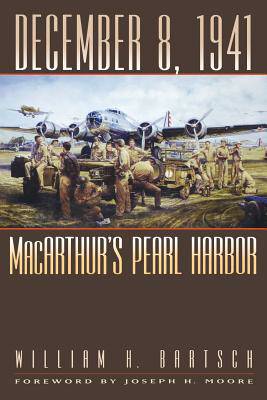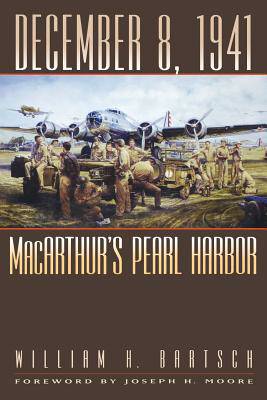
- Retrait gratuit dans votre magasin Club
- 7.000.000 titres dans notre catalogue
- Payer en toute sécurité
- Toujours un magasin près de chez vous
- Retrait gratuit dans votre magasin Club
- 7.000.000 titres dans notre catalogue
- Payer en toute sécurité
- Toujours un magasin près de chez vous
Description
Ten hours after the attack on Pearl Harbor, "another Pearl Harbor" of even more devastating consequence for American arms occurred in the Philippines, 4,500 miles to the west. On December 8, 1941, at 12.35 p.m., 196 Japanese Navy bombers and fighters crippled the largest force of B-17 four-engine bombers outside the United States and also decimated their protective P-40 interceptors. The sudden blow allowed the Japanese to rule the skies over the Philippines, removing the only effective barrier that stood between them and their conquest of Southeast Asia. This event has been called "one of the blackest days in American military history." How could the army commander in the Philippines-the renowned Lt. Gen. Douglas MacArthur-have been caught with all his planes on the ground when he had been alerted in the small hours of that morning of the Pearl Harbor attack and warned of the likelihood of a Japanese strike on his forces? In this book, author William H. Bartsch attempts to answer this and other related questions. Bartsch draws upon twenty-five years of research into American and Japanese records and interviews with many of the participants themselves, particularly survivors of the actual attack on Clark and Iba air bases. The dramatic and detailed coverage of the attack is preceded by an account of the hurried American build-up of air power in the Philippines after July, 1941, and of Japanese planning and preparations for this opening assault of its Southern Operations. Bartsch juxtaposes the experiences of staff of the U.S. War Department in Washington and its Far East Air Force bomber, fighter, and radar personnel in the Philippines, who were affected by its decisions, with those of Japan's Imperial General Headquarters in Tokyo and the 11th Air Fleet staff and pilots on Formosa, who were assigned the responsibility for carrying out the attack on the Philippines five hundred miles to the south. In order to put the December 8th attack in broader context, Bartsch details micro-level personal experiences and presents the political and strategic aspects of American and Japanese planning for a war in the Pacific. Despite the significance of this subject matter, it has never before been given full book-length treatment. This book represents the culmination of decades-long efforts of the author to fill this historical gap.
Spécifications
Parties prenantes
- Auteur(s) :
- Editeur:
Contenu
- Nombre de pages :
- 568
- Langue:
- Anglais
- Collection :
- Tome:
- n° 87
Caractéristiques
- EAN:
- 9781603447416
- Date de parution :
- 15-08-12
- Format:
- Livre broché
- Format numérique:
- Trade paperback (VS)
- Dimensions :
- 152 mm x 229 mm
- Poids :
- 820 g







